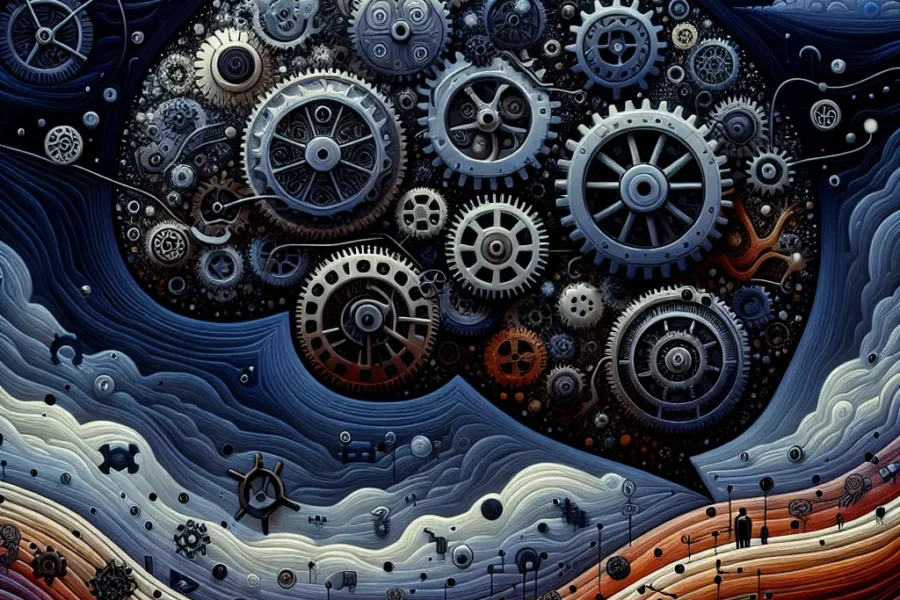Ivan Pavlov, the eminent Russian physiologist, left a significant mark on the world of science with his groundbreaking research. His discoveries particularly around conditioned reflexes have had a profound and lasting impact on our understanding of human and animal psychology, as well as on various applied fields such as education, psychotherapy, and behavior modification.
In the late 19th and early 20th centuries, Pavlov conducted a series of experiments that shed light on the concept of learning through association – a process he termed ‘classical conditioning’. His most famous experiment involved dogs, a bell, and the anticipation of food. Pavlov observed that when a neutral stimulus (a bell) was consistently paired with an unconditioned stimulus (food), the dogs began to associate the sound of the bell with the arrival of food. Eventually, the dogs would begin to salivate merely in response to the bell, even when no food was presented. This reaction became known as a conditioned or “Pavlovian” response.
The impact of Pavlov’s work goes far beyond the confines of the laboratory. His discoveries have widely influenced contemporary practices in various disciplines. In psychology, the principles of classical conditioning have been fundamental to the development of behaviorist theory. Behaviorists, like B.F. Skinner, extended Pavlov’s work and applied it to a broader range of human and animal behaviors. This has allowed for the development of therapies and strategies for managing phobias, addictions, and other behaviors by reconditioning the response to certain stimuli.
In education, Pavlov’s findings have been used to improve teaching methods and curriculum designs. Educators have applied the principles of conditioning to reinforce positive behaviors and discourage negative ones. The use of rewards and positive reinforcement in classrooms can be traced back to Pavlov’s ideas about how environmental cues can be tied to conditioned responses. This has led to an enhanced understanding of how students learn and retain information, enabling educators to create more effective and personalized teaching strategies.
In medicine and psychotherapy, particularly in the treatment of mental health disorders, Pavlov’s conditioning theory has influenced various therapeutic techniques. One notable example is exposure therapy, which is used to treat anxiety disorders such as PTSD and phobias. By gradually exposing patients to the feared object or context without any danger, therapists aim to recondition the patient’s response to reduce anxiety. Cognitive-behavioral therapy (CBT) also incorporates Pavlovian principles by helping patients to reframe and condition their thoughts and reactions to certain stimuli, thereby improving their emotional and behavioral responses.
Pavlov’s influence goes even further, touching upon the realms of marketing and advertising. Marketers have used classical conditioning by associating products with positive stimuli or emotions. For example, commercials often couple products with appealing music, attractive people, or enjoyable situations, fostering positive associations in the consumer’s mind. This strategy increases the likelihood of a consumer developing a favorable attitude towards a product or brand, resulting in increased sales and brand loyalty.
Another field that has been shaped by Pavlov’s work is the field of animal training. By applying classical conditioning, trainers can shape the behavior of animals in various contexts such as pets, service animals, and entertainment. This form of training involves creating associations between commands and desired behaviors, allowing animals to respond correctly to specific cues. The success of this approach has been seen in a variety of settings, from training dogs to guide individuals with visual impairments to teaching complex behaviors in animals for film and television.
Pavlov’s discoveries have also had a thought-provoking impact on our understanding of the biological processes behind learning and behavior. His work has contributed to the field of neuroscience, particularly in the study of the brain’s reward system and how it is influenced by conditioning. Understanding the neurological basis of conditioned responses has been crucial in addressing neurological and psychiatric conditions and developing pharmacological treatments.
Despite the passage of time, the ripple effects of Pavlov’s work continue to be felt. His research has laid down the foundation for a range of scientific advancements, shaping how modern society approaches both human and animal behavior. The principles of classical conditioning form the basis for numerous applications in our daily lives, from the way we raise our children and educate students to how we treat psychological disorders and train animals.
Moreover, Pavlov’s insistence on using rigorous experimental methods and observable phenomena has profoundly influenced scientific research methodologies. His empirical approach set a precedent for future research involving controlled experiments, measurement of responses, and careful observation, elements that remain essential in the scientific studies of today.
In conclusion, the lasting impact of Ivan Pavlov’s discoveries cannot be underestimated. His contributions to the field of psychology and broader scientific communities have shaped myriad aspects of modern life, influencing the way we understand and interact with the world around us. As we continue to explore the complexities of human and animal behavior, Pavlov’s work remains a touchstone, providing essential insights and guiding future discoveries in the intricate science of behavior and learning. With each new application and iteration of his foundational principles, we reaffirm the enduring legacy of Pavlov’s contributions to science and society.



Leave a Comment